Hunting knives are special tools that are required for efficient and humane hunting. Unlike the normal knives, they are designed for such tasks as field dressing and skinning besides ensuring that they are sharp and also with the highest level of hardness. This guide looks at various types of hunting knives and their functionality, addresses some of the questions about blade shapes, and the most important knives, besides helping you sharpen your blade for the best performance.
Hunting Knives vs Normal Knives
A hunting knife and a normal knife can generally both be used to cut but they are different in use and their general design.
Hunting Knives
- Purpose: Intended for hunting activities that include butchering, skinning, and processing of meats or other hunted animals.
- Materials: Usually fabricated from high carbon stainless steel or tool steel materials that provide sharpness, hardness, and toughness when applied on difficult operations.
- Blade Shape: Slightly more often equipped with a drop point or a clip point for improved control and penetration. Drop point blades have a curved belly towards the front which gives good control and deep penetration. As for clip-point blades, they have a slight curve at the very tip, which makes them perfect for penetration and cutting.
- Handle: Most of the time it is designed for a secure hold, especially if it has non-slip or grip surface patterns. Textured handles are more gripping and contoured handles on the other hand fit the hand shape for ease when gripping.
- Size: This tends to depend on the class of the game that is to be hunted but will be larger than normal knives. Big hunting knives are ideal for butchering large animals while in the case of small games, compact knives may be appropriate.
Normal Knives
- Purpose: Mainly employed in daily chores such as chopping, slicing, and opening cans,-and packages among other minor uses.
- Materials: It is typically constructed from stainless steel, offering reasonable strength along with significant corrosion resistance.
- Blade Shape: It depends on the particular type of knife that is involved (that is, cutting, slicing, chopping, etc). It has a broad blade that is convex and has a slight inward curve to it making the Chef’s knife an all round knife to use. Its blade is short and sharp, making it suitable for cutting and boning or slicing thin slivers off fruits and vegetables.
- Handle:It is commonly engineered for comfort and ease of handling. They also come in various designs, and the material used to make handles can be wood, plastic, or metal. The ergonomic handles enhance grip and minimize fatigue; thus are easy to hold throughout the working day.
- Size: They are usually not as large as hunting knives. Utility knives are general-purpose knives that are usually smaller and easier to handle than hunting knives.
Different Types Of Hunting Knives
Hunting knives are indispensable tools for any hunter, each meticulously crafted to facilitate specific tasks during the field dressing process. Here are some common types and their uses:
Skinning Knife
- Purpose: Applicable for skinning an animal, a very sensitive operation that requires firm handling.
- Characteristics: Usually has a thin profile, with a flexible cutting edge and a fine tip that allows it to run under the skin without actually cutting it.
Gut Hook Knife
- Purpose: For dispatching an animal and making sure it does not suffer anymore by expiring with no delay.
- Characteristics: A sword, or any other broad-blade knife that features a long and sharp point that means a stab is a quick and deadly way of killing.
Hunting Dagger
- Purpose: Used for dispatching an animal quickly and humanely, ensuring a swift end to its suffering.
- Characteristics: A fixed-blade knife with a long, pointed blade, often designed for thrusting, provides a lethal and efficient means of dispatch.
Boning Knife
- Purpose: Traditionally employed when deboning meat, a process that calls for time and accuracy, so as not to leave behind any of the unnecessary fat deposits or sinews.
- Characteristics: A short cutting blade, which is rigid and straight, may have a curved extremity for accurate slicing and carving of meat and other food products.
Other Types
- Utility Knife: It can be adapted to being a general-purpose knife for the various activities in field dressing including cutting off fat, severing tendons, and slicing meat to fit in a tote.
- Game Processing Knife: A type of knife intended for certain uses including cutting up large animals, like deer and elk, that calls for strong knives that can endure tough usage.
Which Knife Is Best For Hunting?
Best Blade Shape for Hunting
The choice of blade shape in hunting is determined by the different activities that one intends to undertake. Still, the drop-point or the clip-point blade is generally said to be practical for most hunting scenarios.
It also offers good penetration, slicing abilities, and general flexibility in almost any cutting situation involving these shapes.
Essential Knives for Hunters
While the specific knives you bring may vary depending on your hunting preferences and the type of game you’re hunting, most hunters consider the following essentials.
- Skinning knife: For removing the skin with precision and care.
- Gut hook knife: For efficiently removing the intestines without damaging them.
- Boning knife: For carefully removing meat from bones, ensuring maximum yield and quality.
- Utility knife: For a variety of miscellaneous tasks, including trimming fat, cutting tendons, and preparing meat for transport.
5 Best Hunting Knives Recommendations
1. Kalkal Dressing Knives with Gut Hook
Features: This knife features a 3.94-inch high-carbon stainless steel blade with a gut hook for effortless skinning. The ergonomic handle ensures a firm and comfortable grip. With this hunting kit, you will have 10 different pieces for easy processing work.
- Uses: Primarily designed for gutting and skinning tasks.
- Pros: Sharp blade with a useful gut hook; portable and easy to handle.
- Cons: The blade length may be limiting for certain tasks; some find it difficult to sharpen.
Users appreciate the ease of use with the gut hook and the knife’s portability for fieldwork.
2. MOSSY 10″ Fixed Blade Hunting Knife
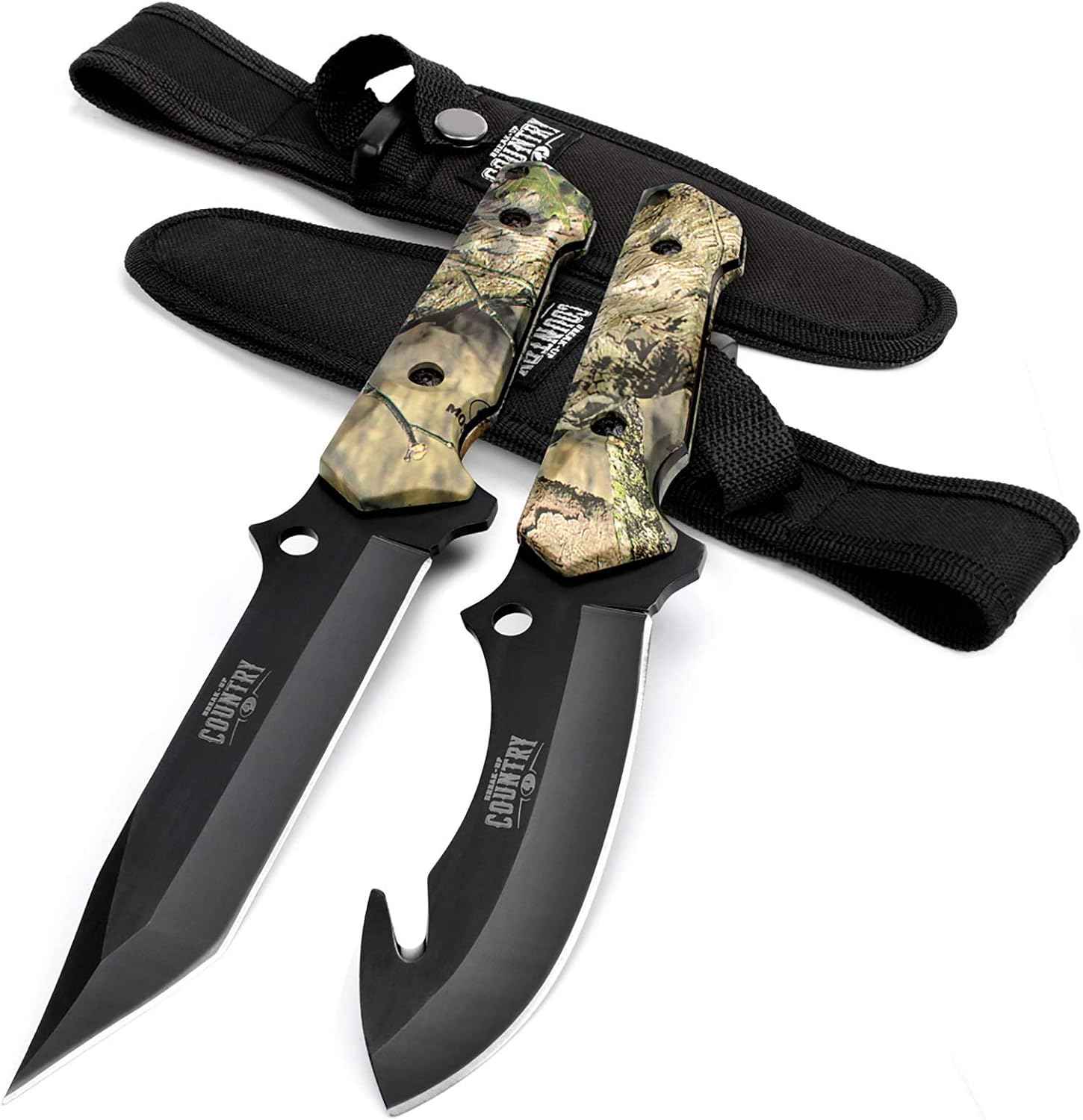
Features: This knife features a durable stainless steel blade that is 10 inches long with a full tang design, providing strength and stability. The handle is made from a textured rubber grip for secure handling even in wet conditions.
- Uses: Ideal for large game processing and general outdoor use.
- Pros: Sturdy construction, comfortable grip, and effective cutting edge.
- Cons: Bulky for smaller tasks; may require frequent sharpening in heavy use.
Users appreciate its robustness and overall performance in skinning and field dressing.
3. KNINE OUTDOORS Dressing Knife
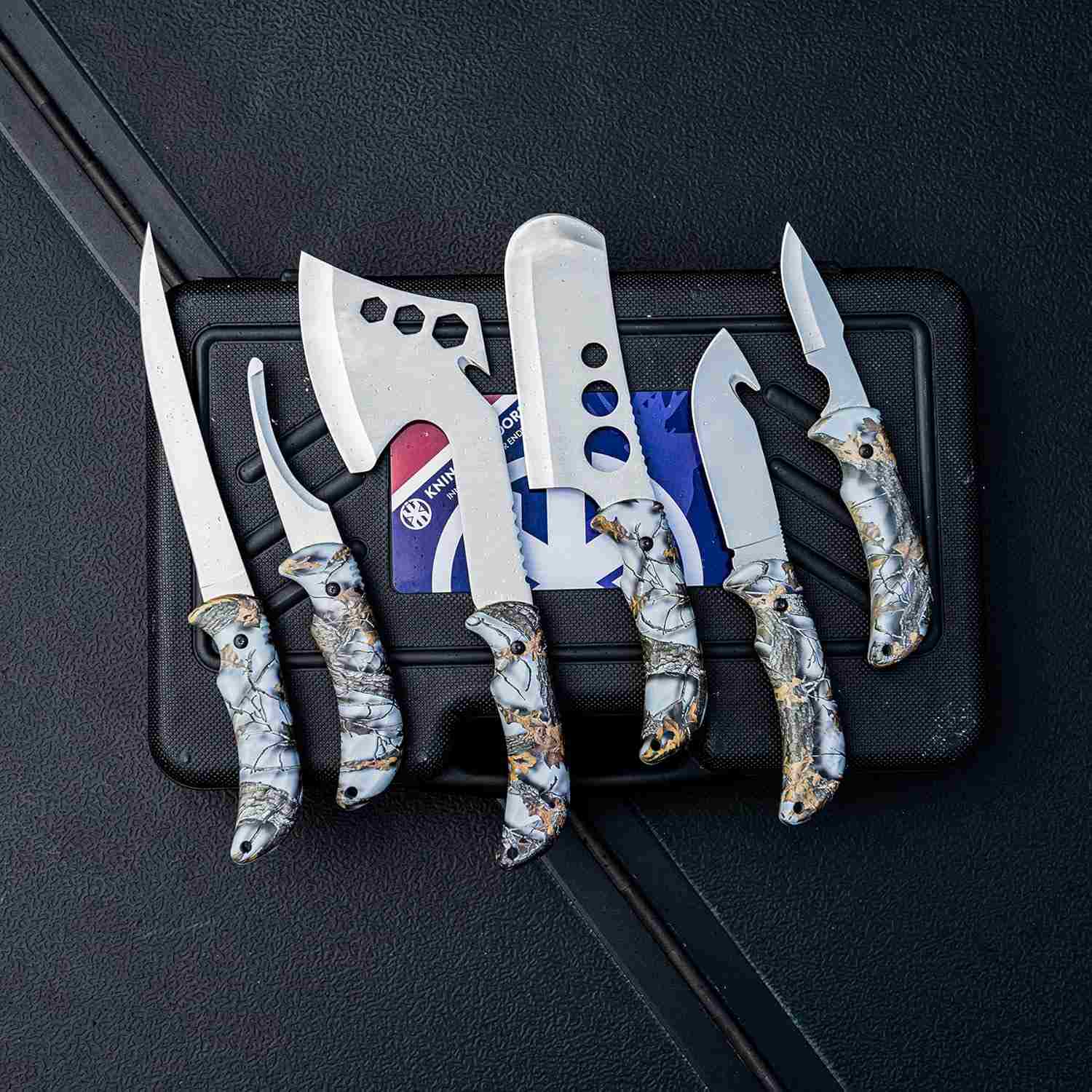
Features: This knife set has 12-piece tools for field-dressing games. The knife comes with a stainless steel blade, 4.25 inches long, perfect for skinning and dressing games. It includes a robust handle made from G10 material for improved grip.
- Uses: Suitable for skinning small to medium-sized game.
- Pros: Lightweight, compact, and easy to sharpen.
- Cons: Limited use for larger games; some users may find it too small.
Customers like its ease of use and effectiveness in dressing without damage to the hide.
4. Outdoor Edge Game Processing Knife
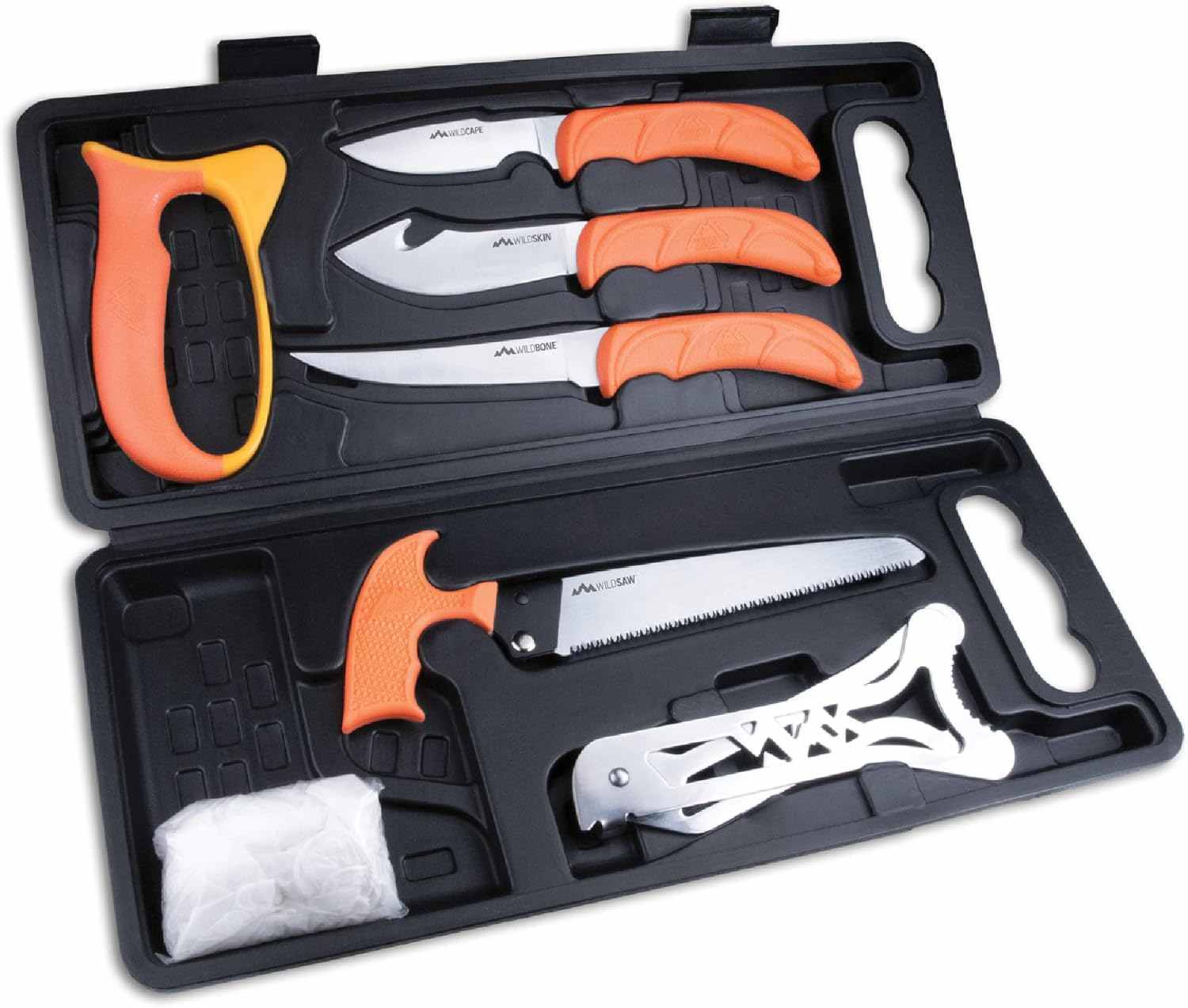
Features: A comprehensive kit that includes a 6-inch skinner blade, a gut hook, and a caping blade, all crafted from high-quality stainless steel. The handles are designed for comfort during prolonged use.
- Uses: Perfect for all aspects of game processing from gutting to skinning.
- Pros: Versatile, handy with multiple blades, and durable.
- Cons: The additional blades may not be necessary for everyone; they require maintenance.
Users appreciate the variety and effectiveness of each blade in the kit, making it a go-to for many hunters.
5. GVDV Hunting Knife Kit
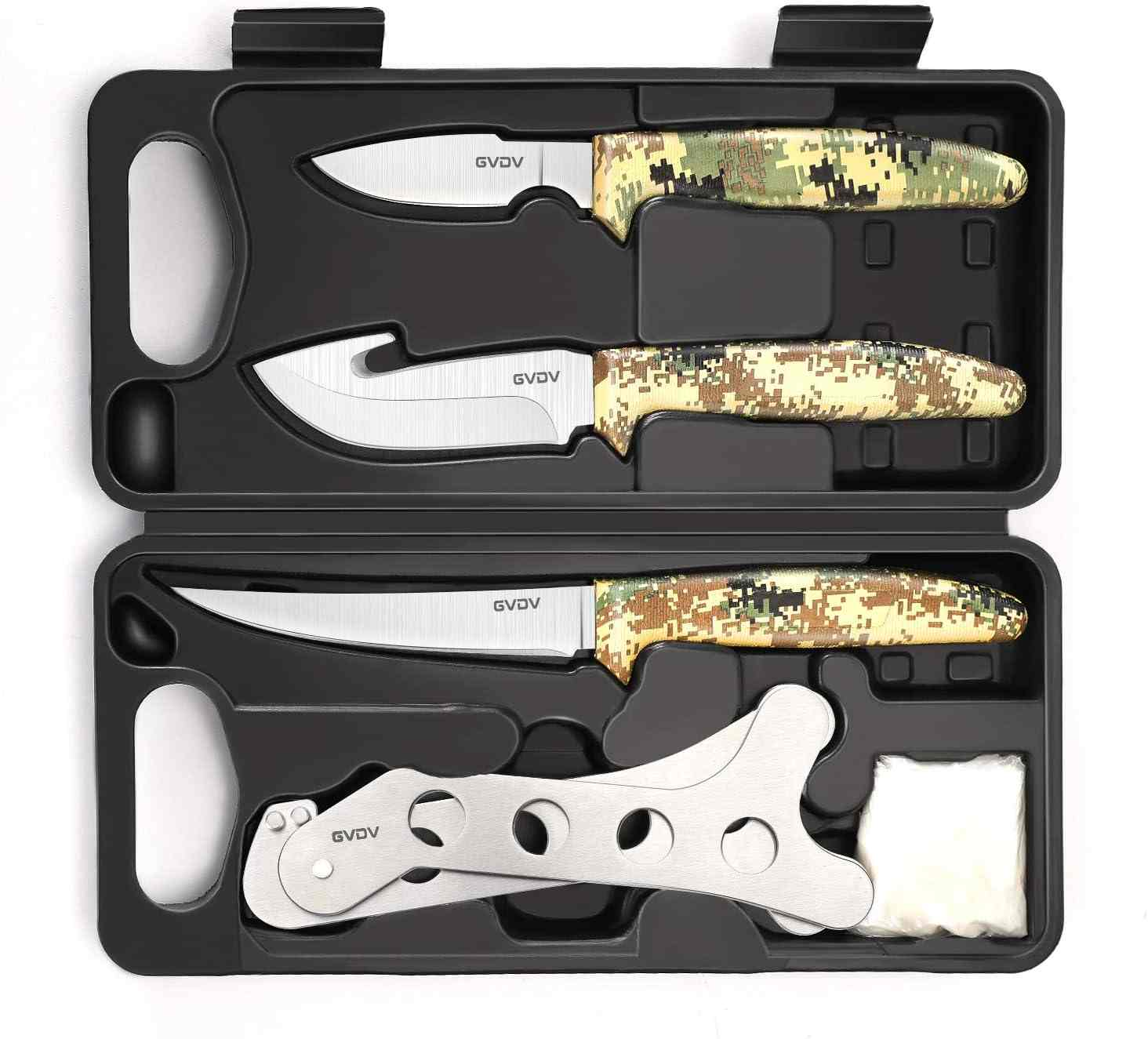
Features: It features a 4.5-inch stainless steel blade with a tactical design. The knife comes with a sheath and includes a paracord bracelet and sharpening stone, catering to needs during outdoor activities.
- Uses: Useful for small game hunting and general outdoor tasks.
- Pros: Multi-functional, includes survival tools, and is easy to carry.
- Cons: Some users find the blade too short for larger tasks; the quality of the sheath is sometimes criticized.
Customers enjoy the all-in-one package and appreciate its compactness for hunters on the move.
Hunting Knife Maintenance Tips
How To Clean a Stainless Steel Hunting Knife?
In general, S/S knives are not prone to Rust but they still need cleaning to retain the sharpness and hygiene state. Here’s a simple method:
- Immediate Cleaning: The blade does not require being washed, but after use, it should be cleaned using a damp cloth to remove dirt and substances. An extra wash is advisable if the knife has been involved in complicated and dirty jobs such as butchering games.
- Hot Water and Soap: The first thing to do is to hold the knife under running hot water with a drop of mild dishwashing soap. In case of stains that are not easily removed by wiping, use a soft bristle brush to do so gently.
- Dry Thoroughly: Wipe the knife off with a clean cloth and do not let the blade remain wet for a long time. Even stainless steel can develop rust or a part of it that is vulnerable to moisture.
How to Sharpen a Hunting Knife?
A sharp hunting knife is essential for efficient and safe use. Here’s a basic guide on how to sharpen a knife:
Tools You Will Need:
- Sharpening stone: Choose a stone with a coarse grit for initial sharpening and a fine grit for honing.
- Honing steel: A honing steel is used to maintain the edge between sharpenings.
Steps For Sharpening:
- Examine the edge for nicks or chips. If you find any, start with a coarse-grit stone.
- Hold the knife at a consistent angle (usually around 20-25 degrees) to the sharpening stone. Use a light, even pressure, and draw the blade across the stone in a circular motion. Alternate between the two sides of the blade to ensure even sharpening.
- Once the edge is sharp, use a honing steel to align the microscopic teeth along the edge. Draw the blade across the honing steel at a slight angle.
- Repeat on both sides of the blade.
Conclusion
Every hunter should have a hunting knife set as each of them is intended to perform certain operations in field dressing.
Knowing the purpose, uses and proper care of different types of hunting knives shall enable you to know what is right and appropriate when the time comes for the harvest. Choosing high-quality hunting knives and proper maintenance of these tools will go a long way in improving your hunting endeavors while making certain that the animals you hunt are handled properly in terms of butchering.


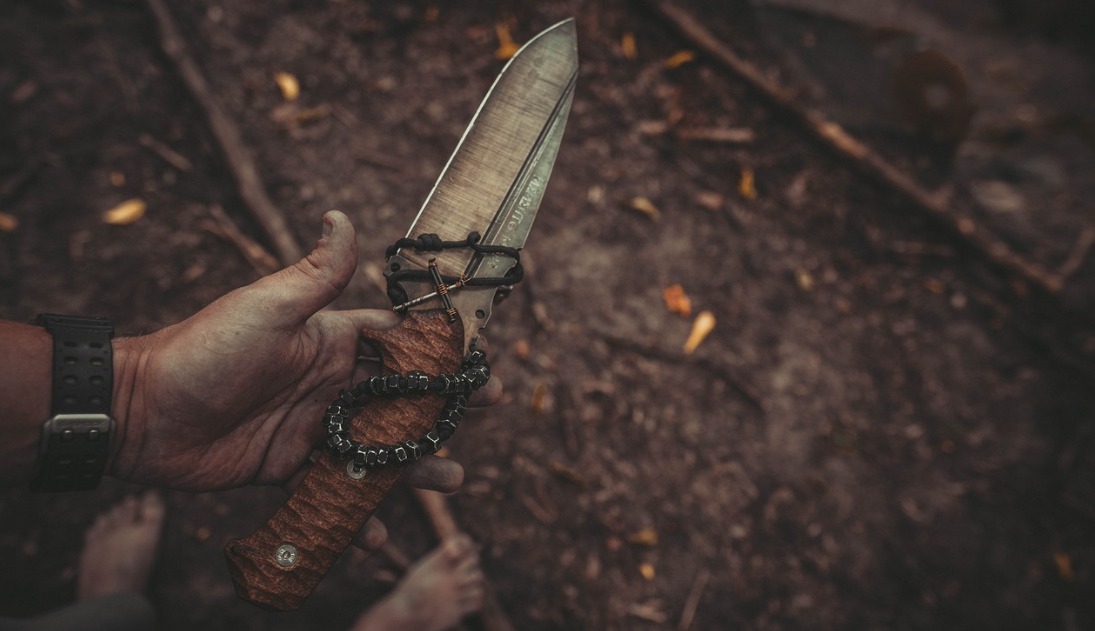
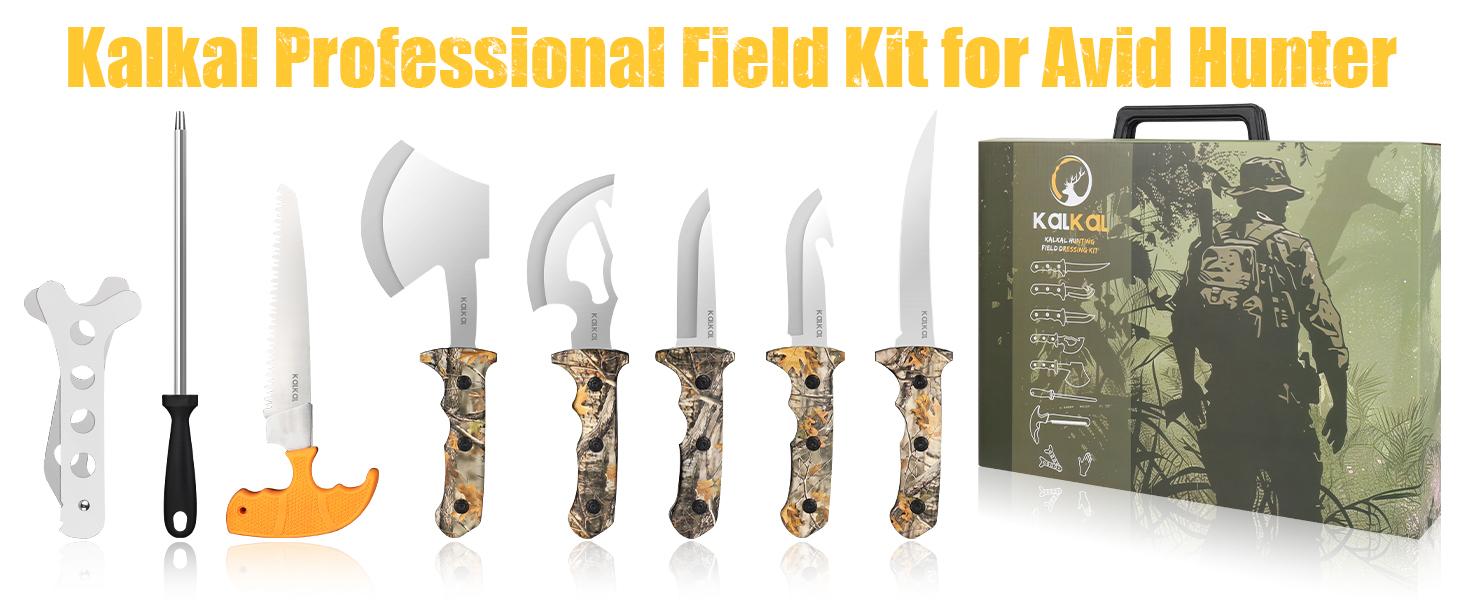







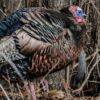
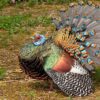








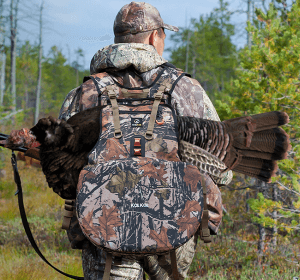
One comment on “Different Types Of Hunting Knives And 5 Best Options”
cưỡng bức phụ nữ
Thanks for a marvelous posting! I genuinely enjoyed reading it, you may be a great author.I will make
certain to bookmark your blog and will often come back sometime soon. I want to encourage yourself to
continue your great posts, have a nice afternoon!